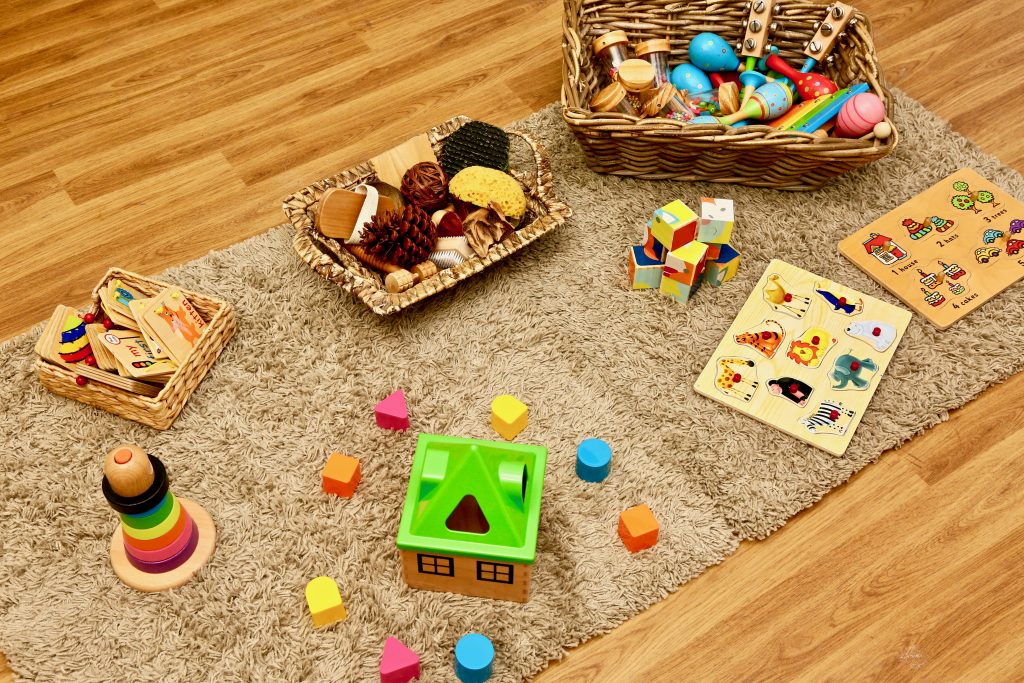Schema Play in Toddlers

As early years practitioners we understand how children grow and develop, and we look to support their development within the Nurseries and Pre-Schools. We wanted to share some of our academic understanding with parents. One such academic concept is Schema play.
The definition of a schema is a pattern of repeated behaviour which allows children to explore and express developing ideas and thoughts through play. The repetitive actions of schematic play allow a child to develop a meaning in what they are doing. Schema play is especially noticeable in toddlers. They will bash, bang, push, pull and drop things. Through play they are looking to understand what does this thing do, what happens if I drop it, will it break if I hit it? The child will continue to test the item or concept to destruction until they have the answers to their questions. Ultimately they are looking to make sense of the world.
When we recognise that a child is exploring a particular schema, we can provide the child with activities to encourage their further exploration and understanding.
Some of the most common types of schema are: Trajectory, Transporting, Rotation, Connecting, Enclosing, Positioning, Enveloping and Orientation.
Trajectory
Patterns of movement emerge in which children move their arms, legs and bodies in horizontal and vertical lines; for example pushing and kicking demonstrating horizontal trajectory; and dropping objects or putting things in and out of containers, demonstrating vertical trajectory. Babies can be observed reaching out for objects, kicking their legs, opening and closing their hands, waving arms up and down or side to side, throwing, pulling, pushing, pointing, rocking, climbing or stepping up and down.
Transporting
Children focus on moving objects from place to place, the objects may be carried in their hands, pockets or through filling containers such as buckets, trolleys, wheelbarrows and bags, these collected objects are then placed in piles around the nursery.
Rotation
Children will turn or rotate themselves or objects. They will spin, twist, roll and turn objects and roll their bodies. Rotational schema are often energetic and children will be seen running and spinning in circles, riding around and around on bikes or twisting ribbons, scarves and ropes.
Connecting
Children will join things together, tying things up using rope, tape, string or ribbon. This can also lead to a disconnecting schema where the child builds something that they can demolish through untying knots.
Enclosing
Children will join lines or building structures with different materials to form an enclosure. These enclosures can be any shape. They may build fences or walls around objects or fill in an enclosure they have drawn or built. They can also draw borders around their art creations, or may arrange the food around the edge of their plate or ride a bike around and around an enclosed space they have built.
Positioning
Children will position, order and arrange objects or themselves. At times children may be obsessive in placing items in an exact place. The children may be observed lining up objects in order of size, colour or shape.
Enveloping
Children will cover objects or themselves with different materials. This could include dressing in a number of hats, scarves, necklaces and bangles. Making dens under blankets or using furniture to construct a cave. Children may fill bags with all sorts of bits and pieces from around the nursery, paint or glue over their hands and then peel it off or paint over a picture with a single colour. They may be seen wrapping items in pieces of paper or materials.
Orientation
Children will look at things from different viewpoints such as hanging upside down, looking through their legs, looking at things upside down. Children may enjoy building ramps to see higher up, rolling, climbing or standing on a ledge to see in a higher position.


